Explore Persian Rugs: Styles, Care, and Authenticity
The Unique Charm and Cultural Significance
The world of Persian rugs is steeped in history and culture, making these pieces not just home decor, but a narrative of ancient artistry.
Originating from what is now modern-day Iran, Persian rugs are celebrated for their unparalleled craftsmanship and enduring beauty. Each rug narrates a story, weaving together tales of empires, traditions, and the indelible spirit of its creators.
The term 'Persian rugs' resonates with connoisseurs and enthusiasts alike, drawing attention with its promise of authenticity and luxury.
These rugs serve as a testament to the rich Persian culture, often depicting scenes from Persian folklore, poetry, and the natural beauty of the landscapes.
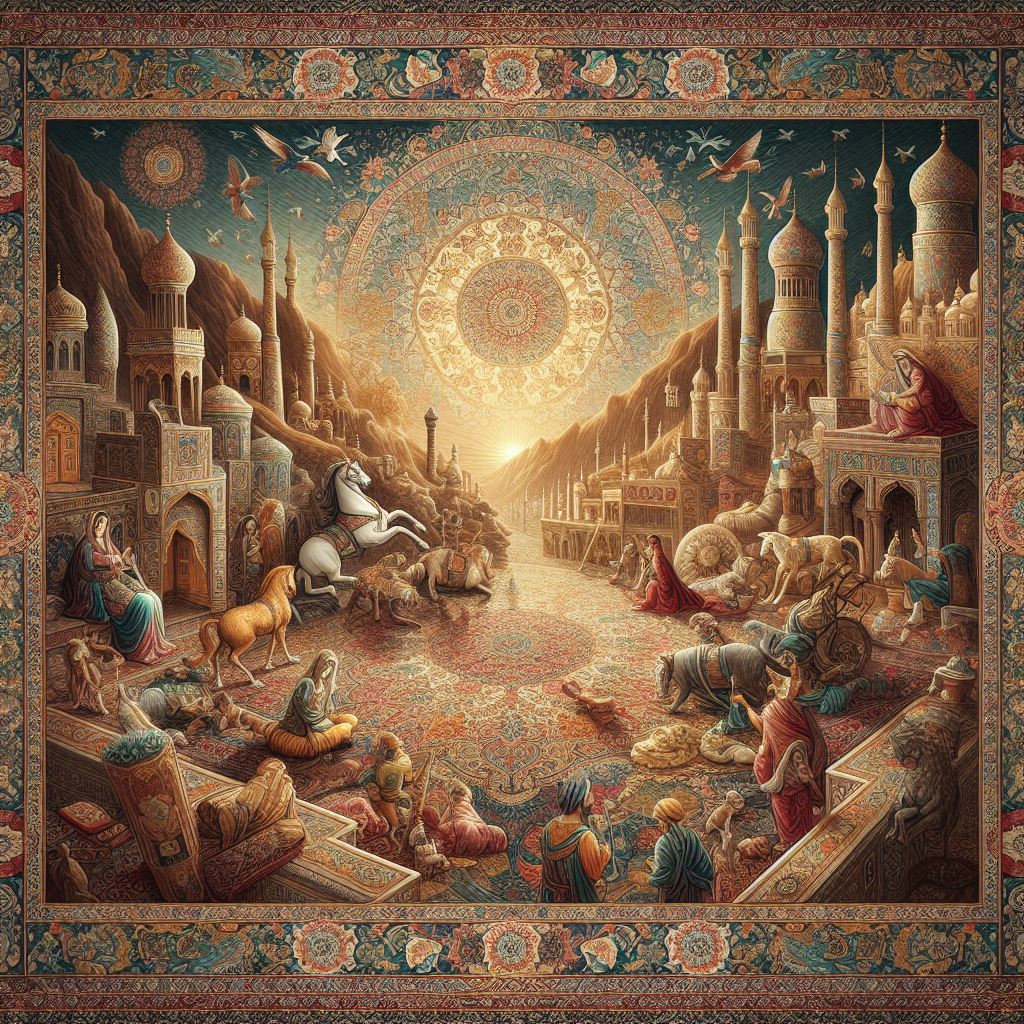
Origins and Historical Significance
The origins of Persian rugs date back to ancient Persia, now Iran, over 2,500 years ago. The earliest known example, the Pazyryk carpet, discovered in a Scythian burial mound in Siberia in the 1940s, dates back to the 5th century BCE. This discovery highlighted the advanced state of weaving and the aesthetic complexity of Persian rug design even in ancient times.
Persian rugs were initially crafted for practical purposes, to cover the floors of the nomadic tribes of Persia. Over time, they became a symbol of wealth, prestige, and artistry. By the time of the Sassanian Empire (224-651 CE), Persian carpets were renowned throughout the ancient world, valued for their intricate designs and superb craftsmanship.
Evolution of Design and Technique
The evolution of Persian rugs over the centuries has been influenced by cultural exchanges, historical events, and technological advancements. The designs evolved from simple motifs inspired by the natural surroundings of the weavers to more elaborate patterns featuring floral designs, animal figures, and geometric shapes. The introduction of Islamic motifs after the Arab conquest of Persia in the 7th century added a new dimension to rug designs, incorporating calligraphy and motifs inspired by Islamic architecture.
The Mongol invasion in the 13th century and the subsequent establishment of the Ilkhanate introduced Chinese influences, such as cloud bands, dragons, and phoenixes, into Persian rug designs. The Safavid dynasty (1501-1722) is often considered the golden age of Persian rug making, with the establishment of royal workshops and the introduction of silk threads and gold and silver filaments, elevating the craft to unprecedented levels of artistry and luxury.
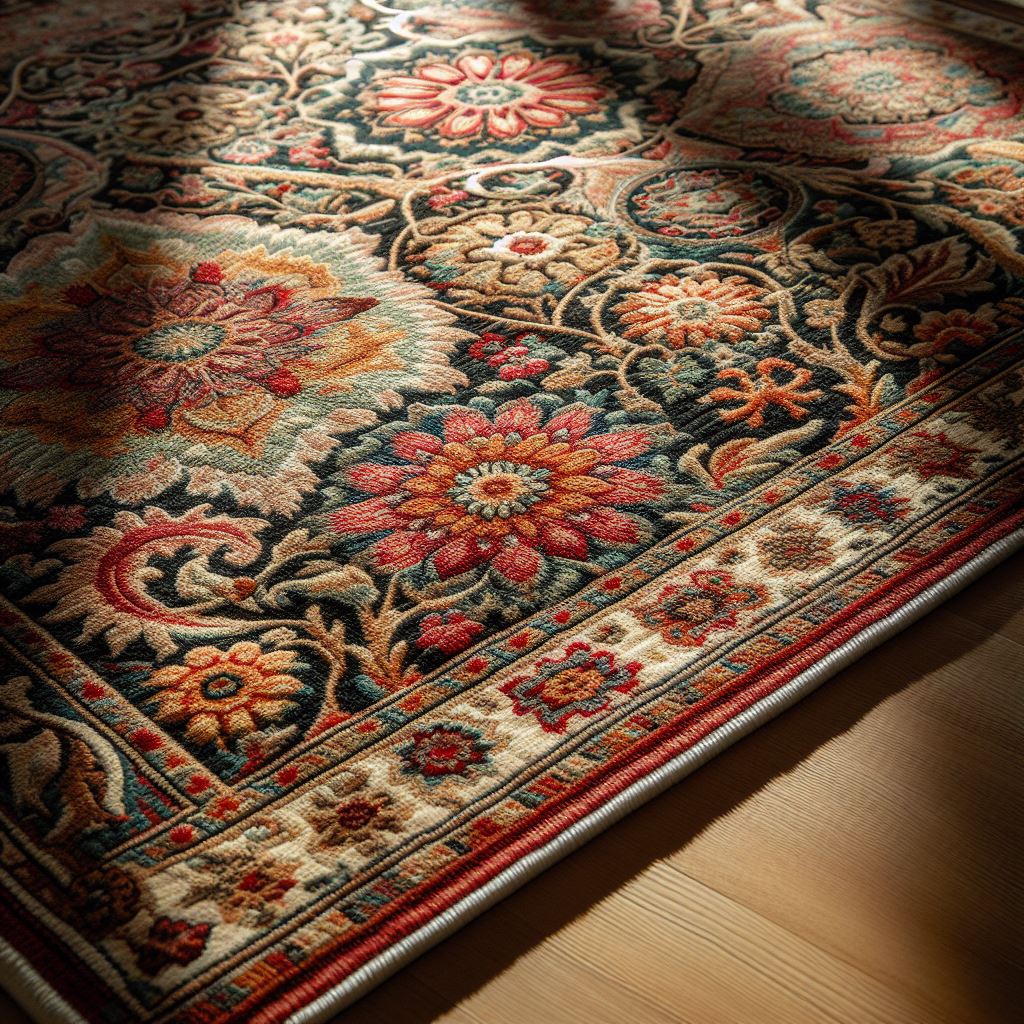
Regional Variations
Persian rugs are known for their regional variations, with each area developing its distinctive style and weaving techniques. Cities like Tabriz, Kashan, Isfahan, and Qum became famous for their fine rugs, each with unique characteristics. For instance, Tabriz rugs are known for their medallion designs, while Kashan rugs often feature central medallions surrounded by floral motifs.
Modern Developments
In the modern era, Persian rugs continue to be highly valued for their beauty, craftsmanship, and cultural significance. The 20th century saw changes in production methods and the introduction of chemical dyes, which allowed for a broader range of colours but also sparked debates about quality and authenticity.
Today, there is a growing appreciation for antique Persian rugs and a resurgence of interest in traditional natural dyes and hand-weaving techniques.
Persian Rug Types
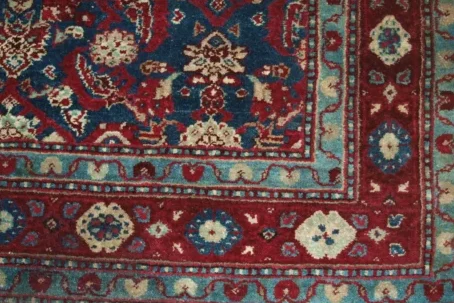
Agra Rugs
Mughal-inspired, intricate floral designs, rich deep colours, fine wool, from Agra, India, since the 16th century.
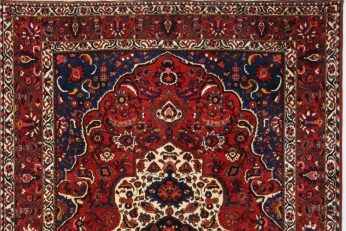
Bahktiari Rugs
Handwoven by nomadic tribes in Iran, bold patterns, vibrant colours, garden motifs, durable wool, since the 19th century.
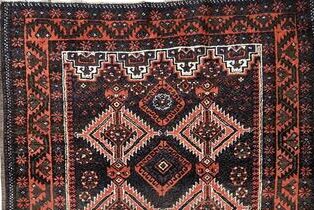
Baluch Rugs
Tribal, geometric designs, deep blues, reds, earth tones, wool, handwoven by Baluch nomads in Iran, Afghanistan, Pakistan.
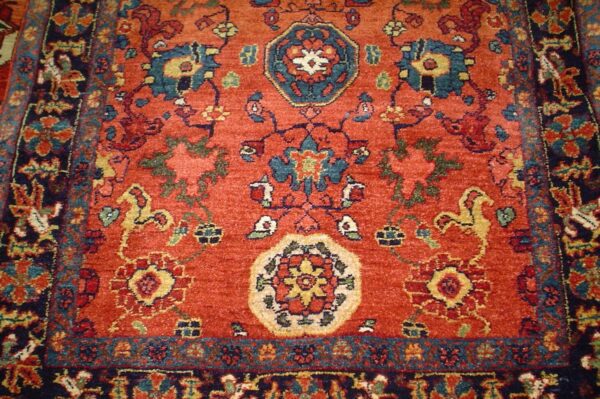
Bijari Rugs
Known as "Iron Rugs" of Iran, tight weave, heavy, durable, intricate designs, deep reds and blues, since 19th century.
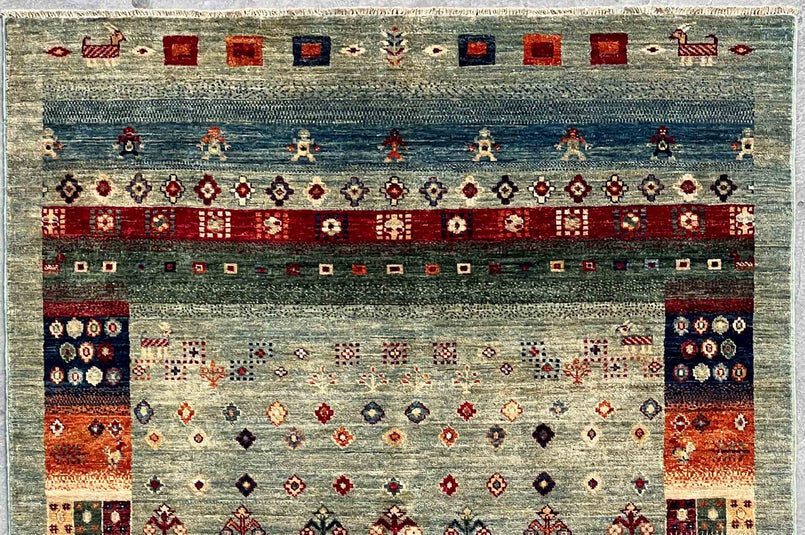
Gabbeh Rugs
Simple, primitive patterns, thick wool pile, vibrant natural dyes, handwoven by Iranian nomads, since late 19th century.
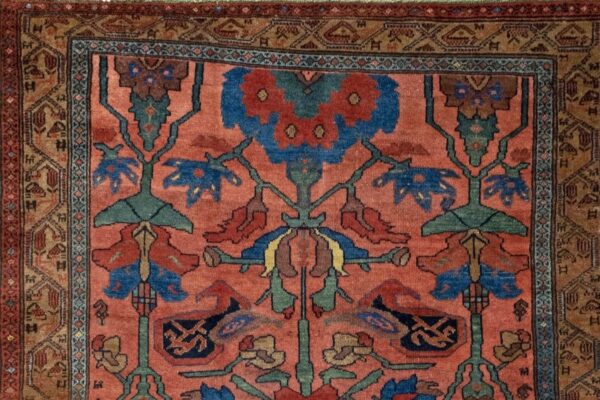
Hamadan Rugs
Diverse designs, sturdy, geometric patterns, medallions, vibrant colours, wool, from Hamadan region of Iran, since ancient times.

Heriz Rugs
Strong, geometric patterns, central medallion, durable wool, rich reds and blues, from Heriz, Iran, since early 19th century.
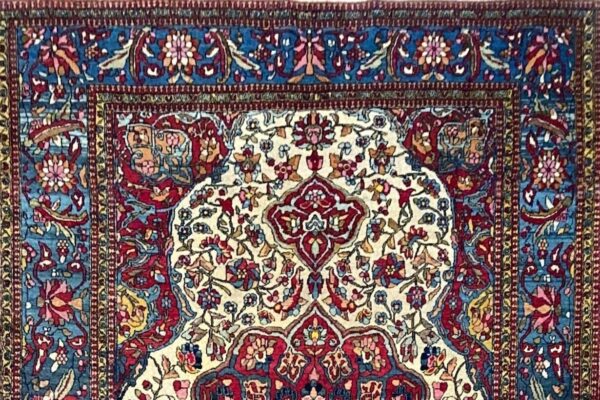
Isfahan Rugs
Fine, intricate patterns, silk and wool, sophisticated floral designs, vibrant colors, from Isfahan, Iran, since the 16th century.
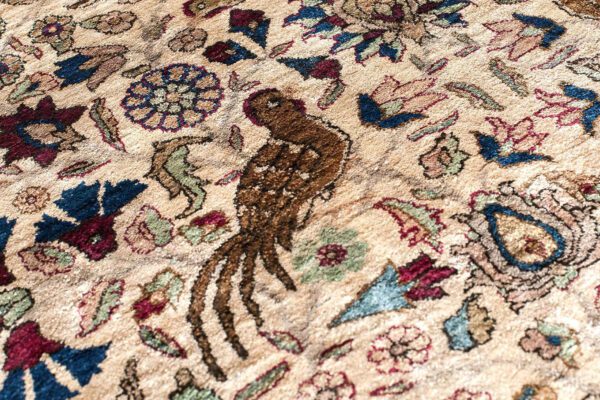
Kashan Rugs
Elegant floral designs, high-quality wool and silk, rich colours, precise craftsmanship, from Kashan, Iran, since the 17th century.
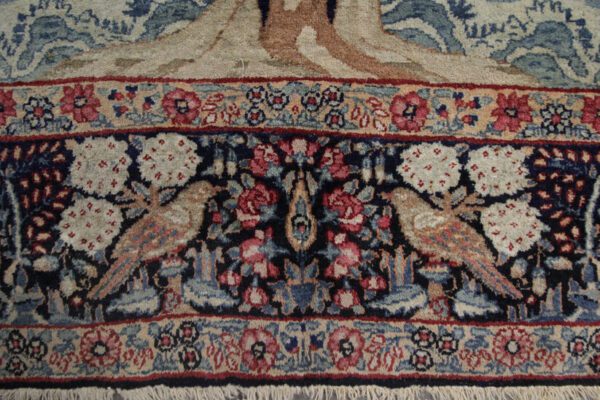
Kerman Rugs
Luxurious, detailed floral and garden designs, soft wool, pastel to rich colors, from Kerman, Iran, since the 15th century.
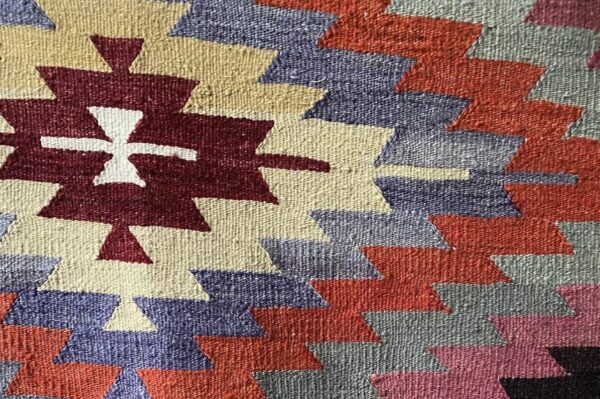
Kilim Rugs
Flat-woven, no pile, geometric and tribal patterns, bright colours, wool, traditional in Turkey, Iran, and the Balkans.
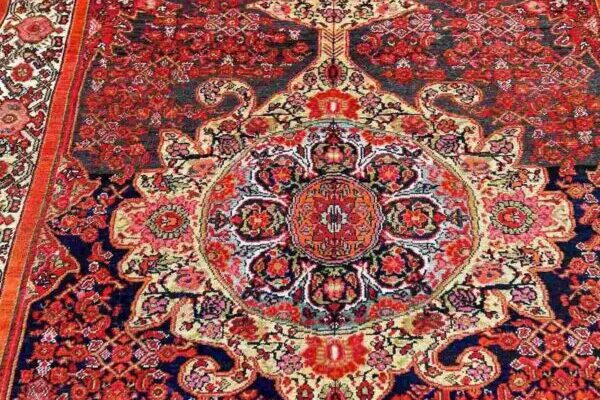
Malayer Rugs
Small to mid-size, intricate motifs, predominantly dark blue and red, durable wool, from Malayer, Iran, since the 19th century.
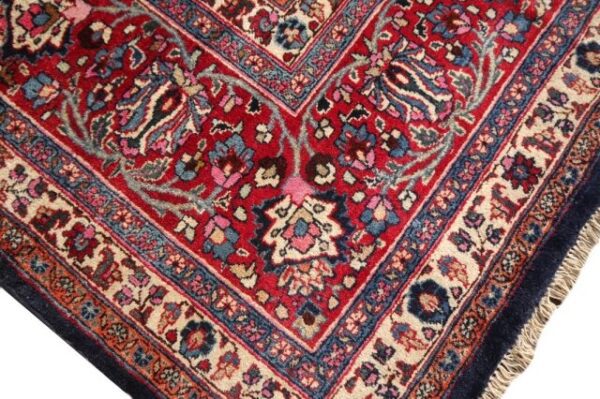
Mashad Rugs
Large, intricate floral designs, deep reds, blues, soft wool, from Mashad, Iran, central medallion, since the 19th century.
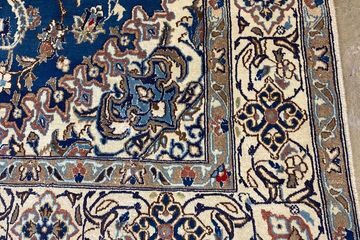
Nain Rugs
High knot density, fine wool and silk, intricate floral and medallion designs, light colours, from Nain, Iran, since 20th century.
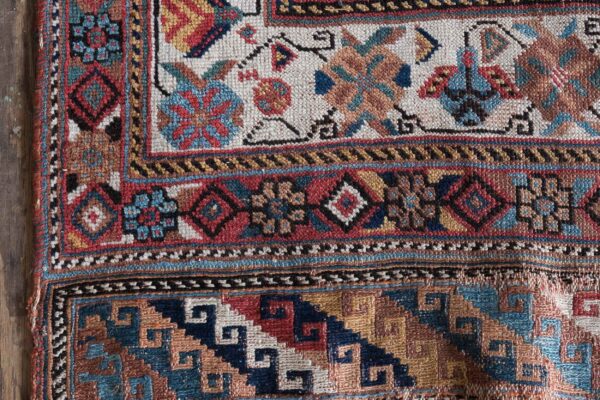
Qashqai Rugs
Bold, tribal patterns, vibrant colours, handwoven wool, produced by Qashqai nomads in Iran, since the 19th century.
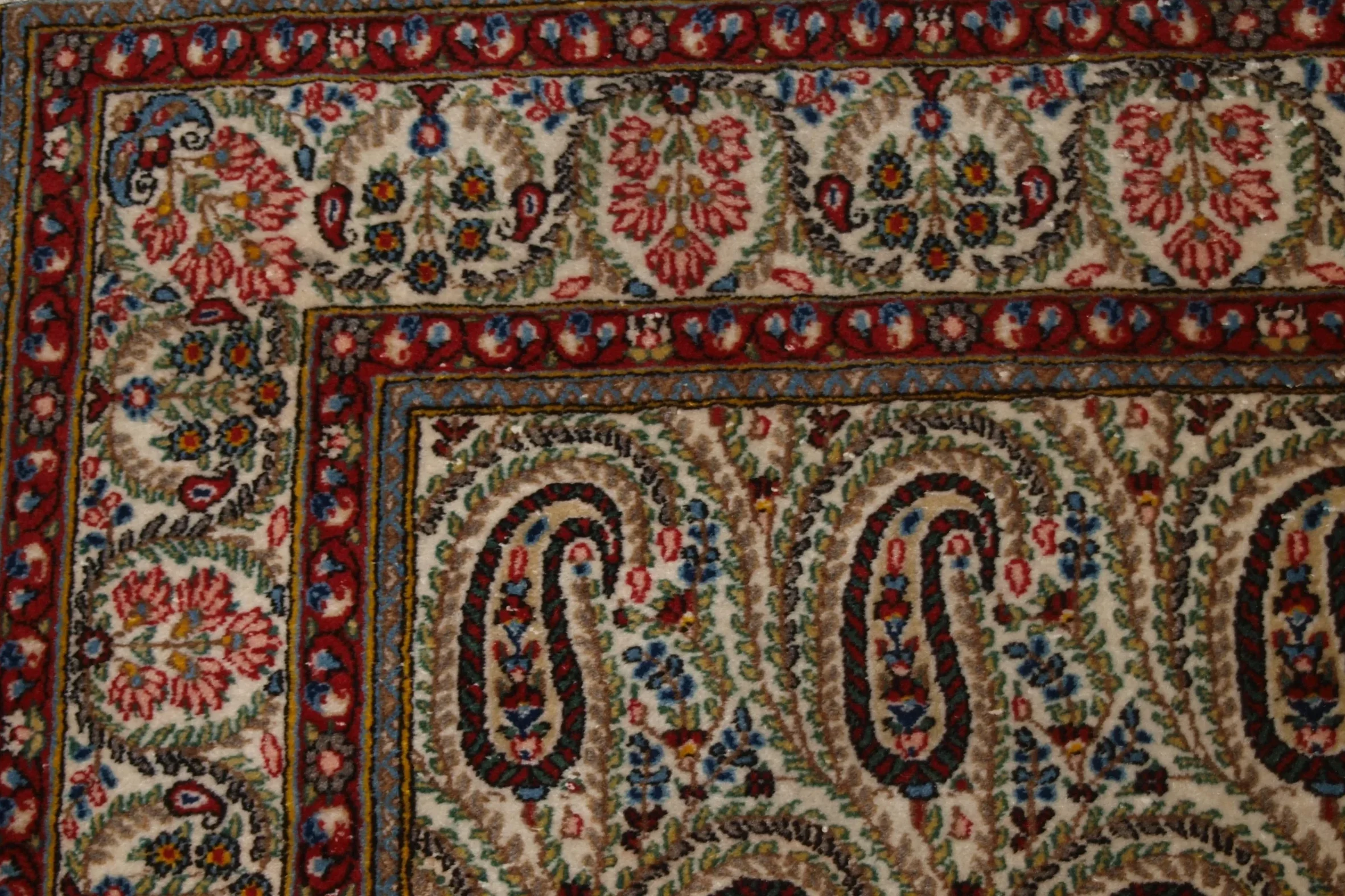
Qum Rugs
Luxurious silk, fine knotting, detailed floral and medallion designs, vibrant colours, from Qum, Iran, since early 20th century.
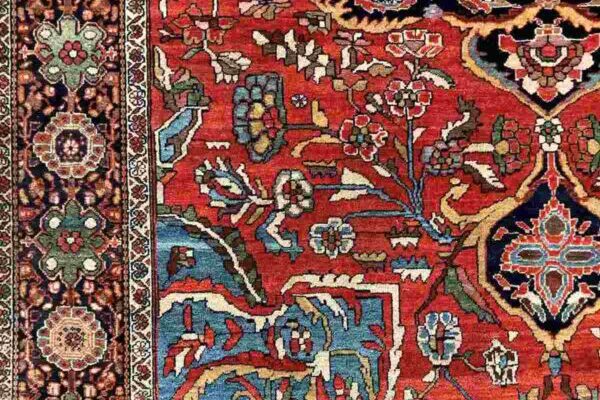
Sarouk Rugs
Dense pile, floral motifs, rich reds and navies, durable wool, from Sarouk, Iran, handwoven since the late 19th century.
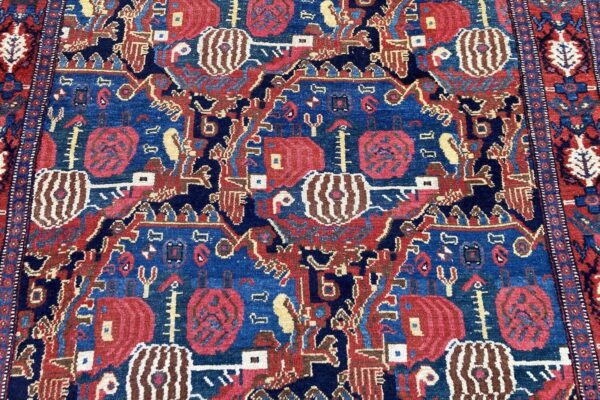
Senneh Rugs
Fine, tight weave, intricate geometric & floral designs, high-quality wool, from Sanandaj (Senneh), Iran.
Joe Rugs - Carpet Expert
Hello! I'm Joseph Rugs, the founder of CarpetJoe.com and your guide through the intricate world of carpets. Born and raised in London with a deep-rooted passion for art and culture, I've explored the globe to bring the rich tapestry of carpet weaving right to your screen. My academic background in arts and humanities from Oxford has fuelled my curiosity, leading me to uncover the stories behind every knot and weave. As a family man, my adventures are shared with my loved ones, enriching our lives with every piece of art we encounter. Join me as we explore the beauty and craftsmanship of carpets together.
Common Types of Oriental Rugs
Each type of Oriental rug has its unique charm and story, making them more than just a luxury item; they are a piece of their country's cultural legacy. Collectors and enthusiasts of Oriental and Persian rugs appreciate them not only for their aesthetic appeal but also for their cultural, historical, and artistic significance.
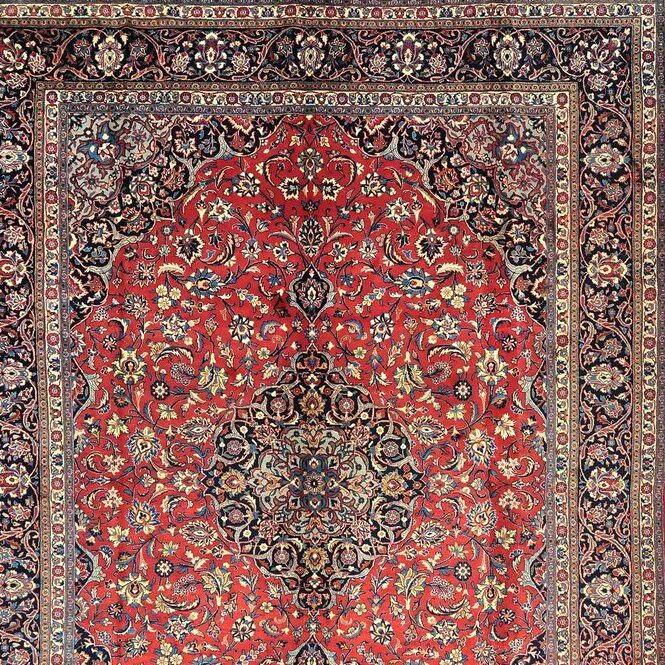
Persian Rugs
Originating from what is now modern-day Iran, Persian rugs are celebrated for their unparalleled craftsmanship and enduring beauty.
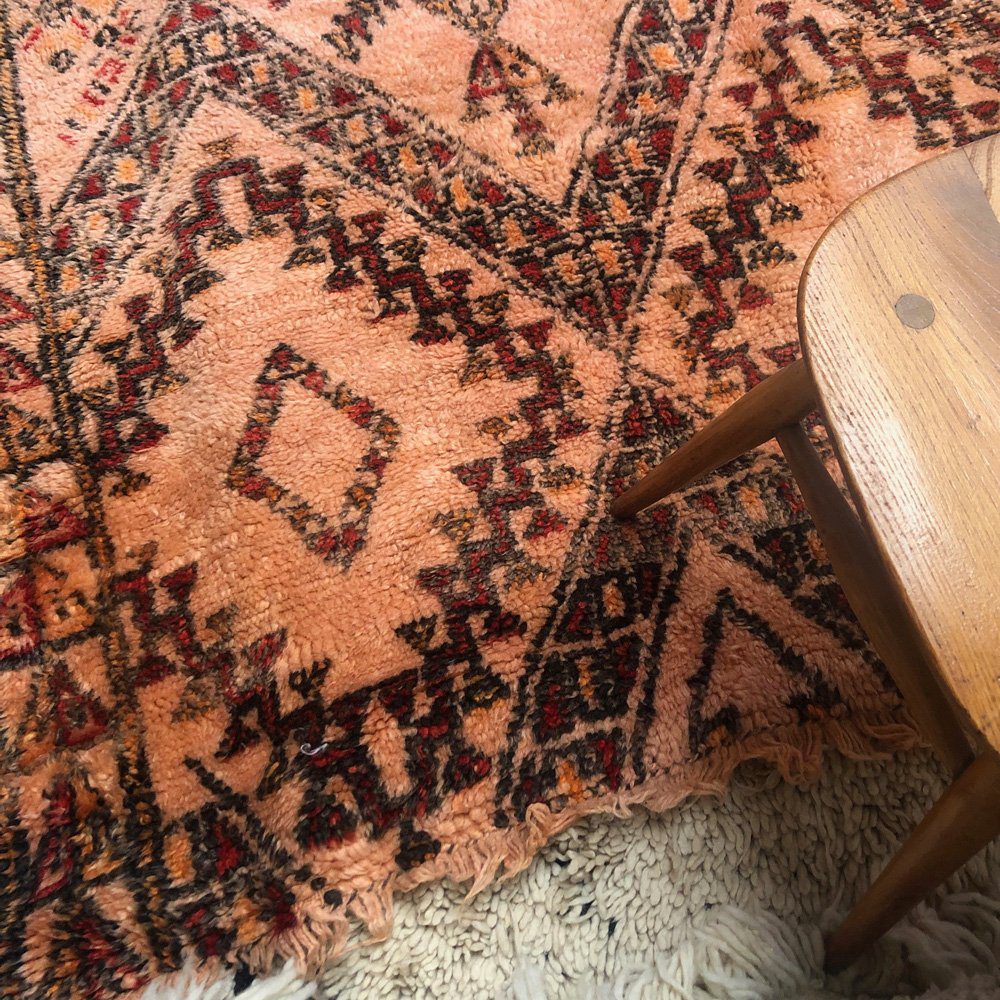
Berber Rugs
Originating from the Berber tribes of North Africa, particularly Morocco, this type of carpet is renowned for its rugged texture and resilient nature.
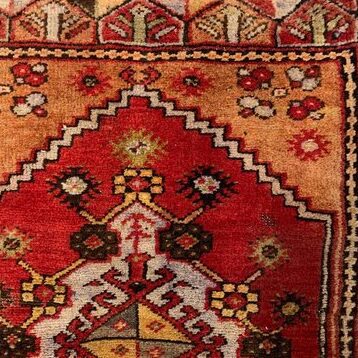
Turkish Rugs
Turkish rugs have a legacy steeped in history and artistry, and have always been a symbol of exquisite craftsmanship and cultural significance.
Persian Rugs in Recent Times: From Traditional to Modern Interpretations
Persian rugs are not a monolith; their styles vary significantly, reflecting the diverse cultural influences of the vast Persian region. From the intricate floral motifs of Tabriz rugs to the bold, geometric patterns of Bakhtiari rugs, the variety is immense. Each style has its unique characteristics, influenced by the local traditions, climate, and resources available in the region. The 'oriental rugs' category, which includes Persian rugs, is often characterized by these diverse styles that range from densely patterned traditional designs to more streamlined modern interpretations.
The Allure of Persian Style Rugs
In recent years, there has been a surge in popularity for 'Persian style rugs'. These rugs blend the traditional Persian motifs with contemporary design elements, making them suitable for modern interiors. They offer a taste of the exotic, combined with a familiarity that appeals to a broad audience. The 'pink Persian rugs', known for their softer hues and romantic appeal, exemplify this trend. They bring a subtle yet striking element to any room, bridging the gap between traditional art and contemporary style.
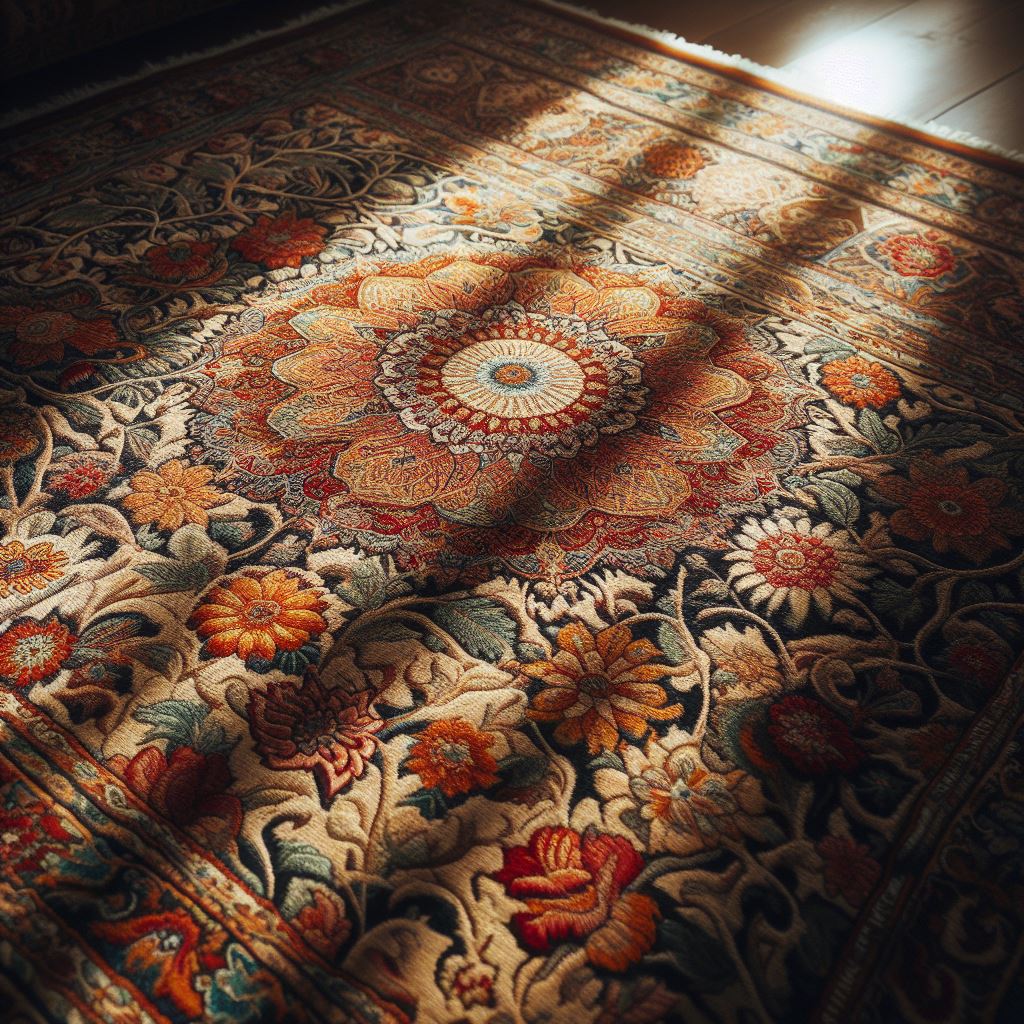
The Charm of Pink Persian Rugs
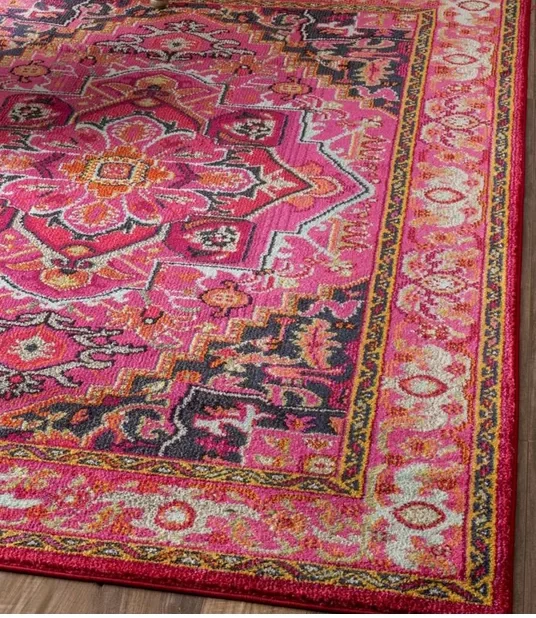
Aesthetic Appeal in Modern Decor
Pink Persian rugs, known for their soft and subtle hues, have carved a unique niche in modern decor. These rugs blend traditional craftsmanship with a modern colour palette, making them a popular choice for contemporary interiors. The appeal of these rugs lies in their versatility; they harmonize with various styles, from minimalist to eclectic, adding a touch of elegance and warmth. The colour pink, often associated with romance and softness, introduces a fresh, modern vibe to the traditional Persian patterns.
Symbolism and Design Variations
In Persian culture, colours are more than just aesthetic choices; they carry deep symbolic meanings. Pink, often representing joy and creativity, adds a layer of expressiveness to the rugs. These rugs range from featuring classic floral motifs to more abstract designs, making each piece unique. The use of pink, from bold shades to pastel tones, challenges traditional norms and embraces contemporary design trends, making pink Persian rugs a statement piece in home decor.
The Value and Authenticity of Persian Rugs
Understanding Rug Value and Pricing
The value of Persian rugs hinges on factors like age, craftsmanship, and condition. Authentic, especially antique, Persian rugs can be valuable investments. Understanding their value involves recognizing the hand-knotting process, quality materials, and craftsmanship. The market offers a range of options for various budgets.
Identifying Authentic Persian Rugs
Authentic Persian rugs are hand-knotted, evident in their distinct underside appearance. Key indicators include knot count, material quality, and pattern intricacy. Irregularities in weave are signs of handcrafting. Purchasing from reputable sources and seeking expert appraisals can confirm authenticity.
Preservation and Collection of Persian Rugs
Collecting and preserving antique Persian rugs is a pursuit of passion and historical preservation. Enthusiasts and collectors often view these rugs as artefacts of cultural heritage, requiring careful and knowledgeable maintenance. The preservation involves protecting them from environmental factors like excessive moisture and sunlight, which can damage the delicate fibres and fade the colours. Regular, gentle cleaning and avoiding harsh chemicals are essential to maintain the integrity of these vintage pieces. Collectors of antique Persian rugs are custodians of history, preserving these artistic treasures for future generations.
Maintenance of Persian Rugs and Cleaning Tips
Proper care is crucial for maintaining the beauty and longevity of Persian rugs. Regular vacuuming, prompt stain treatment, and avoiding harsh chemicals are key.
Deep cleaning should be gentle, using mild detergents. Professional cleaning is recommended for thorough maintenance.
Preserving the Rug’s Beauty Over Time
To preserve a Persian rug's appearance, protect it from direct sunlight to prevent fading and rotate it regularly for even wear. Proper storage is essential for longevity. Understanding the rug’s material aids in appropriate care practices.
Persian Rugs Care & Maintenance
Rug Cleaning Mastery and Solutions to Common Damages
Understanding the proper techniques for rug cleaning is essential for maintaining their beauty and longevity. Regular vacuuming is a key step in preventing dust and dirt accumulation. However, deeper cleaning methods, such as steam cleaning or dry cleaning, are necessary for removing stubborn stains and embedded dirt.
Steam cleaning, or hot water extraction, is particularly effective for thorough cleaning and sanitizing.
For delicate rugs, dry cleaning with special powders or solvents is advisable.
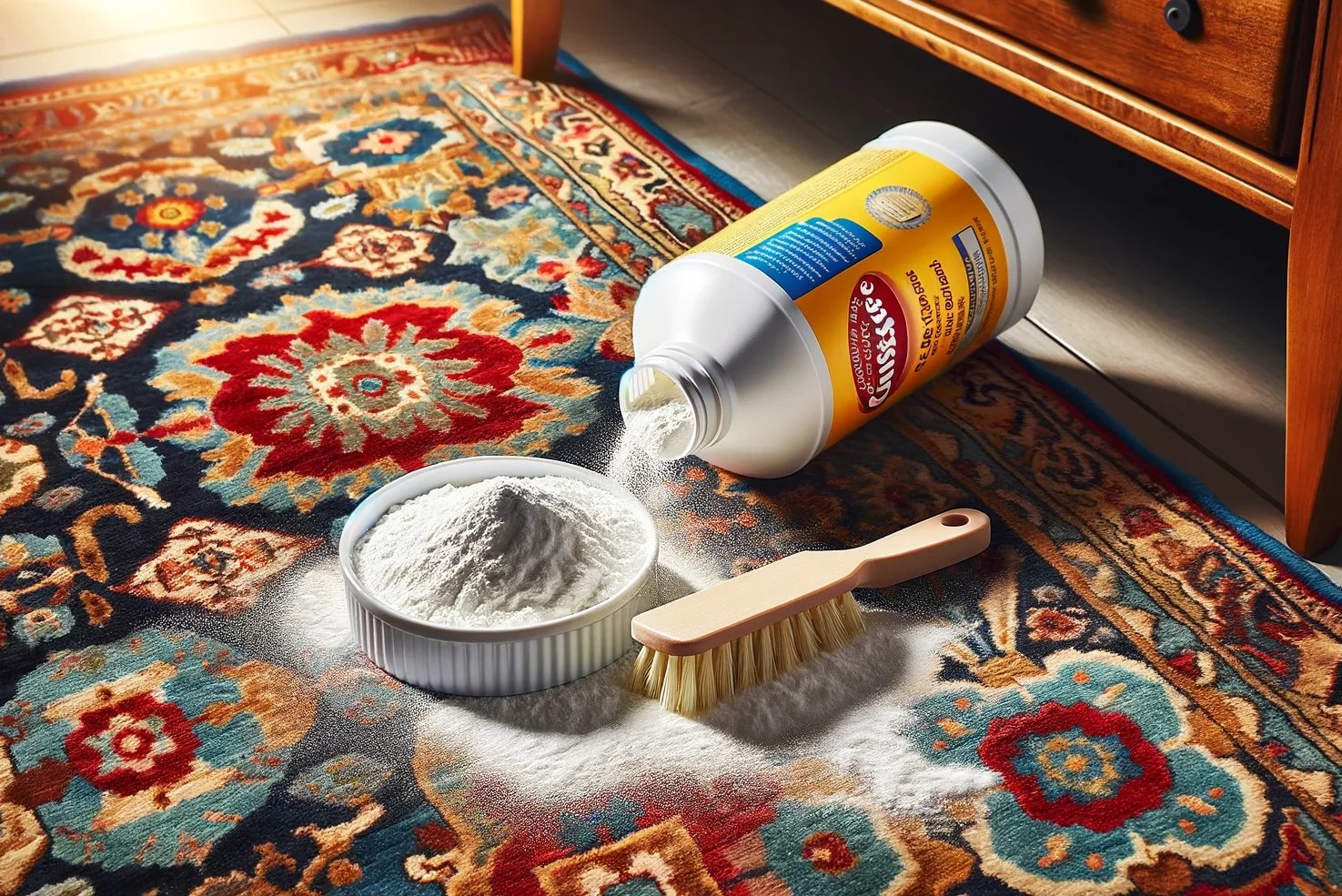
Homemade Flea Treatments for Carpets
Homemade flea treatments for carpets offer a natural and cost-effective alternative to commercial products. Read More →
Explore my Collection of Persian & Oriental Culture Inspired Gift Ideas found on Amazon
Frequently Asked Questions
Cleaning Persian rugs involves gentle care. Regular vacuuming without a beater bar is essential.
For stains, use a mild detergent mixed with water and gently dab the area. Avoid using harsh chemicals and excessive water, which can damage the rug's fibres.
For thorough cleaning, professional rug cleaning services are recommended.
Persian rugs are special for their rich history, unique designs, and intricate craftsmanship.
They are hand-knotted with great skill and often take months or years to complete.
The designs of Persian rugs are culturally significant, often inspired by Persian art, history, and nature. They are also known for their durability and high-quality materials like silk and wool, making them valuable and long-lasting.
Persian rugs often symbolize the cultural, historical, and artistic heritage of Iran. The motifs and patterns in these rugs can represent a variety of themes, including prosperity, happiness, and stories from Persian folklore. They are also seen as symbols of luxury and sophistication, reflecting the artistic skill and tradition of the Persian weavers.
Persian rugs are valuable due to their intricate handcrafted designs, high-quality materials, and cultural significance. The labor-intensive process of hand-knotting, combined with the use of natural dyes and fibers, results in a product that is not only beautiful but also durable. Antique Persian rugs, especially those that are well-preserved and have historical significance, are highly sought after and can be quite valuable.
The main differences between Persian and Turkish rugs lie in their origin, design, materials, and knotting techniques. Persian rugs are from Iran and often feature intricate floral motifs with silk inlays, while Turkish rugs are from Turkey, known for geometric patterns and tribal designs.
A real Persian rug is hand-knotted, and you can see the knots on the back of the rug. The design on the back should be as clear as on the front. Authentic rugs often have slight imperfections and variations in color due to the natural dyes and handcrafting process.




